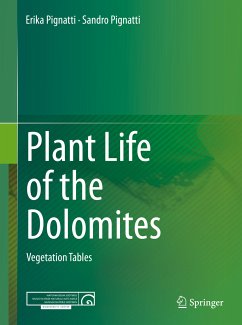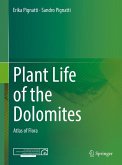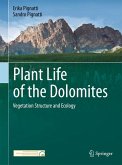The structure of this supplementary volume corresponds to that of the main volume with a key part consisting of twelve chapters, each describing a specific habitat, and a total of 106 associations. Several topics covered in the main volume, such as the exploration of the flora, ecological factors and syntaxonomy are discussed further here.
Dieser Download kann aus rechtlichen Gründen nur mit Rechnungsadresse in A, B, BG, CY, CZ, D, DK, EW, E, FIN, F, GR, HR, H, IRL, I, LT, L, LR, M, NL, PL, P, R, S, SLO, SK ausgeliefert werden.
"This book aims to be more than simply a phytosociological description of the vegetation of the Dolomites. ... Each habitat chapter begins with a general introduction, including highly detailed descriptions with excellent illustrations, of the ecological and environmental conditions associated with that habitat. ... Each vegetation description, and indeed each chapter, is illustrated with excellent photographs and distribution maps, and overall the book is a beautiful object ... . it is simply a lovely book." (Rob Brooker, Mountain Research and Development (MRD), Vol. 35 (1), February, 2015)
"The book represents an extraordinary wealth of information. The layout with numerous beautiful colour photographs, instructive tables, maps, diagrams and flow charts ... is not only nice but also makes the information easily accessible and comparable. ... The book is the first comprehensive modern vegetation overview of a larger region, both within Italy and for the Alps in general, and hopefully will inspire others to follow this pioneer work." (Jürgen Dengler, Bulletin of the European Dry Grassland Group, Issue 24-25, November, 2014)
"The amount of information held here is absolutely colossal, written by enthusiasts who know the area well. Whether you're interested in individual plant species, or in seeing how the communities fit within the wider landscape, there will be something here for you. The love of the area comes through in the writing and there are even three suggested itineraries 'for getting to know the flora of the Dolomites'. A wonderful book to become lost in." (Peter Thomas, The Bulletin, Vol. 45, August, 2014)









